My Gospel of Q: A Nonbinary Emergence
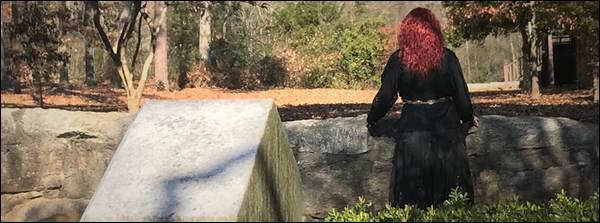
“Brought up in the West of the 20th century, in a family of origin where everyone, to my knowledge, was cisgender; born to a mother whose identity and career were subsumed, willingly, if unconsciously, by her husband’s; coached and prepped and manicured and indoctrinated to be a lace- and satin- and pearls-wearing daughter, a stellar woman student preparing to find her spouse in college, a devoted wife marrying to become a devoted mother, etc., I dutifully fulfilled (or tried my damndest to fulfill) my pre-ordained roles, every step of the way. I put on the blinders with the pearls. I sat with my knees always together. I let the boy call first. I tried never to win, against boys, at games. I always served my husband first; always gave him the best of what there was; then, took less for myself.”—Beau Oiseau
Two-Spirited
By Beau Oiseau

“With her foot on the threshold she waited a moment longer in a scene which was vanishing even as she looked, and then, as she moved and took Minta’s arm and left the room, it changed, it shaped itself differently; it had become, she knew, giving one last look at it over her shoulder, already the past.”—Virginia Woolf, To the Lighthouse
“When a nonbinary individual is sexual, every act can be charged with the personal and political. Almost the entirety of our understandings of sex—from the media to sex ed to our love songs and how to’s—involves bodies gendered along the binary. Queer partners are asked who’s the girl, even when both or neither are, because sex is coded heteronormative: the male dominates and penetrates, the female receives. Dominant/submission, penetrator/penetrated. Even in queer or same sex partnerships, sex is coded along the gender binary, and to experience your body or someone else’s outside of these heteronormative scripts is an act of radical undoing, of radical innovation.”—Maya Gittelman, “Three Steps Toward Good Sex Beyond the Binary: Having Sex with a Non-Binary Person, Even When That Person is You”
TOULOUSE Louisiana—(Weekly Hubris)—March 2020—I was going to title this first essay of mine, writing as Beau Oiseau, “Reader: My Husband of 25 Years Married a Lesbian.”
But that was before I began, in earnest, ever the dutiful student, seriously to research my subject; seriously to consider who I am, in terms of gender, in terms of desire, in terms of bedrock identity.
It was a bit—my reading—akin to setting a bonobo in heat down in the Library of Congress (and there is a rotten pun therein).
My head has been spinning 24/7 for twelve months, the twelve months I have been in love with Minta (let’s call her Minta), and I still have little to report. Lots to experience, little to share, all this past year. My head, my heart, and my flesh are all spinning in mid-air. I have many metaphors to describe my condition, my position, my orientation . . . but, still, so much of my inner dialogue feels like “noise.” And may well sound like noise to you.
The voices of the women in my family who set my (tiny, tightly bound) feet on the path they, themselves, walked exclusively, are still so loud in my memory. The voices of my new guides are just that: new—however true—but not so loud.

The poet/essayist/activist Adrienne Rich, a woman whose poems I’ve loved all my adult life, but whose writings on women’s sexuality, and the patriarchy, I had not read till this year, has become one of the new voices in my ear, my new guides.
“‘Compulsory Heterosexuality and Lesbian Existence’ is a 1980 essay by Adrienne Rich, which was also published in her 1986 book Blood, Bread, and Poetry: Selected Prose 1979-1985 as a part of the radical-feminism movement of the late 60s, 70s, and 80s. [It is] a text that is constructed to think about and inspire change about lesbian visibility, structures of lesbian sexuality, and the role of literary criticism in relationship to lesbianism. Adrienne Rich argues that heterosexuality is not ‘natural’ or intrinsic in human instincts, but an institution imposed upon many cultures and societies that renders women in a subordinate situation. It was written to challenge the erasure of lesbian existence from a large amount of scholarly feminist literature. It was not written to widen divisions but to encourage heterosexual feminists to examine heterosexuality as a political institution which disempowers women and to change it. ‘Compulsory’ means required or obligatory and ‘heterosexuality’ means the assumption that all romantic relationships are between a man and a woman. The normalcy of heterosexuality and the defiance of that are both political in nature. Adrienne Rich argues that heterosexuality is a violent political institution making way for the ‘male right of physical, economical, and emotional access’ to women. . . . Rich challenges the notion of women’s dependence on men as social and economic supports, as well as for adult sexuality and psychological completion. She calls for what she describes as a greater understanding of lesbian experience, and believes that once such an understanding is obtained, these boundaries will be widened and women will be able to experience the ‘erotic’ in female terms.”—Wikipedia
Another guide is Michael Gold:
“When I came out as gay more than ten years ago, there were only four letters commonly used to group various sexual and gender minorities: L, G, B and T. These letters were an evolution toward inclusion—an expansion of the language used to represent a disparate group that had often just been called ‘the gay community.’ Despite their intent, the letters proved to be limiting. Times and attitudes have changed, and the language used to discuss sexual orientation and gender identity has also changed. As a result, the established L.G.B.T. abbreviation has acquired a few extra letters—and a cluster of ancillary terminology around both sexuality and gender. Not everyone has adopted them yet. . . .NONBINARY A person who identifies as neither male nor female and sees themselves outside the gender binary. This is sometimes shortened to N.B. or enby. One notable example: Taylor Mason, a financial analyst on the show ‘Billions,’ who is believed to be the first gender nonbinary character on television and is played by the nonbinary actor Asia Kate Dillon. GENDERQUEER Another term often used to describe someone whose gender identity is outside the strict male/female binary. They may exhibit both traditionally masculine and feminine qualities or neither. GENDER FLUID A term used by people whose identity shifts or fluctuates. Sometimes these individuals may identify or express themselves as more masculine on some days, and more feminine on others.”—Michael Gold
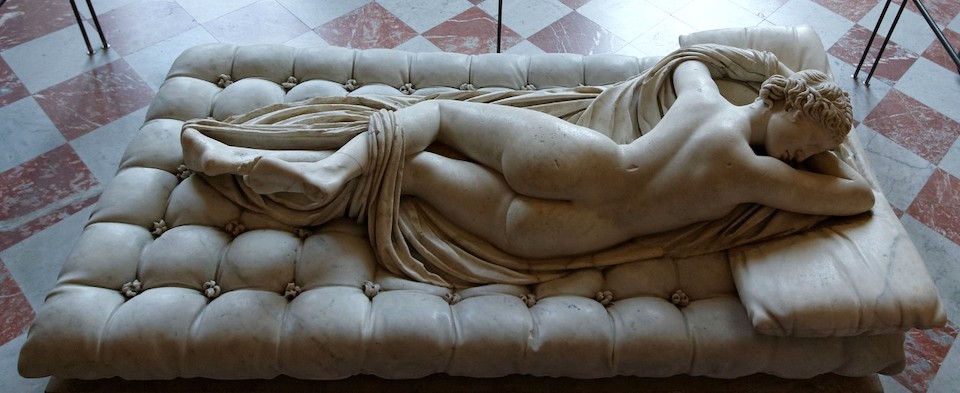
After a long year of reading, and of sex with a woman, and of loving a woman, with all the heart I have left at my advanced age, I have come to the conclusion that, Reader, my beloved husband (and, truly, I have always chafed at “my husband,” “my wife”—those terms of possession) of 25 years did not marry a lesbian: he married, instead, an enby, an N.B., a Nonbinary, a person whose sexuality is, and has always been, not always one thing or the other. A person whose identity is not either/or; zero-sum. (I am, also, according to writer/activist Sam Killermann, more properly “Skoliosexual”—“attracted to genderqueer and transsexual people and expressions (people who aren’t identified as cisgender).”
One metaphor: “As Anne Fausto-Sterling has argued, ‘bodily experiences are brought into being by our development in particular cultures and historical periods . . . . As we grow and develop, we literally, not just ‘discursively’ (that is, through language and cultural practices), construct our bodies, incorporating experience into our very flesh.” (Lisa M. Diamond, Sexual Fluidity)
Brought up in “the West” of the 20th century, in a family of origin where everyone, to my knowledge, was cisgender; born to a mother whose identity and career were subsumed, willingly, if unconsciously, by her husband’s; coached and prepped and manicured and indoctrinated to be a lace- and satin- and pearls-wearing daughter, a stellar woman student preparing to find her spouse in college, a devoted wife marrying to become a devoted mother, etc., I dutifully fulfilled (or tried my damndest to fulfill) my pre-ordained roles, every step of the way.
I put on the blinders with the pearls. I sat with my knees always together. I let the boy call first. I tried never to win, against boys, at games. I always served my husband first; always gave him the best of what there was; then, took less for myself.
My mother wept literal tears, when, in my first year in college, I told her I’d begun using Tampons: Reader, in her eyes, I was no longer a virgin. (The message here? I, as a cisgender woman, should not even be the first to penetrate myself: that right belonged to some as yet unknown man!)
I disappeared into what I was told a woman might be but, still, always, I knew I had been lied to. I had been told, and told, and told that I was, that I might be, only one thing. And I had always been at least two things.
In my flesh, I knew I was other. I always knew.
Like Frederic, in “The Pirates of Penzance, or, The Slave of Duty,” the young man who believes, until he encounters attractive girls his own age, that his ancient, ugly nursemaid Ruth is the only woman on earth, I too went along with the vast, organized (by men) machinery of my culture-of-birth. Received wisdom dictated my course in life very specifically. Duty—filial—dictated whom I would love, whom I would marry, whom I would have sex with (after marriage), whom I . . . would, could, even see as an object of desire.
I knew, without being told explicitly, that (echo Adrienne Rich) the “male right of physical, economical, and emotional access” to women was the very first rule of Fight Club.
My life was, in some ways, transgressive. I threw over some traces, early on, and those small acts of rebellion probably kept me from going completely off the rails, because I knew, in my gut, that I was not the dutiful daughter, woman, and wife I was expected to be; that I was play-acting.
This geisha was never comfortable in her shoes, but believed she was, in fact, a geisha. A geisha had given birth to her. She’d been brought up in a nest of other seemingly contented geishas. She looked the part. She was desired by men: why, why did she not, ever, truly, then, desire them?
When, almost 70, I fell into Minta’s arms, when I lay with her naked, and wrapped myself around her, I wept for sheer joy. This, this, this was where I should have been all along, I realized (and realized in my marrow): how, how, how could I have gone almost all my life without knowing this simple, basic, visceral truth?
Well, the truth is, that a lot of energy—vast amounts of human energy, and for centuries—has gone into keeping women-who-love-women out of one another’s arms. Women have been, are, such a valuable commodity for men. In the patriarchies—Western, Eastern, everywhere—women, children, animals, and men-enslaved have been the plinth upon which the entitled rise. And rise.
Imagine if we kicked over all the traces and loved whomever we wished?
Imagine if we were . . . bonobos?

I’ve learned, by the way, this past year, that there are “lesbians-from-birth” who are not all that pleased about those of us who identify as Nonbinary.
Here are two more of my guides on that topic:
“‘All identities are valid.’ Queers love to say this, only to raise an eyebrow at the lesbian who mentions her ex-boyfriend, or the trans person who changes their pronouns more than once. All too often, when queers say ‘all identities are valid’ it’s with the unspoken caveat: ‘as long as you’re absolutely certain, and your narrative is coherent, and you stay in your box.’ Why are queers resistant to ‘incoherence’ (read: fluidity) in ourselves and others? In my experience, the impulse is rooted in trauma. When you’ve been told over and over again that your desires are unnatural, that your relationship isn’t valid, or that your sexual orientation or gender expression is ‘just a phase,’ you learn to be ashamed of your experiences, and to not trust your own account of them. In short, queers resist fluidity in ourselves and others because we crave the acceptance and validation that’s been denied to us by our loved ones and society at large.”—Adrian Silbernagle
“Trans politics isn’t about conforming to respectability or professionalism or ‘you wouldn’t dress that way if you didn’t want attention’ victim-blaming crap, and it’s not about ending gender or erasing femininity so we can all be ‘neutral’ (read: masculine). It’s about erasing gender policing, it’s about dismantling the binary so everyone can rid themselves of patriarchal prescribed gender roles, it’s about allowing fluidity of identity and expression. There is no trans liberation without black and brown liberation from white supremacy and colonialism, queer liberation from heteronormativity, women’s liberation from patriarchy, crip and mad liberation from ableism, and worker’s liberation from capitalism.”—Morgan Potts
Looking back, I see that, truly, I had no models for thinking of my gender in other ways than did my mother, my aunts, my grandmothers, my friends; my heterosexual, cisgender peers.
It seems incredible, to Minta, that I encountered, over seven decades, only one lesbian openly, ardently attracted to me. But, now, in retrospect, I can see that the single terrifying night I spent with that young woman, some 30 years ago, was so traumatic for me that, the very next day, I literally got on a plane bound for the other side of the world.
I felt, that night, like an inhabitant of The Matrix who had awakened, just for an instant. I stuck my head up, had the bejesus scared out of me, and took a nosedive back into my so-uncomfortable comfort zone.
![]()
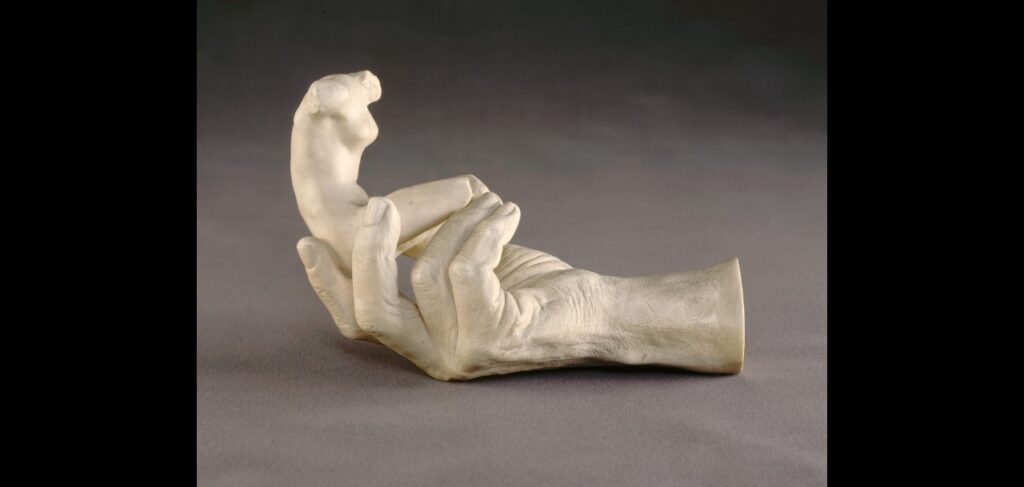
Had the person who married that gentle man, “mon homme,” known she was an enby, would she have married him, all those years ago, now? No, Reader, she would not have. For his blameless sake, certainly, more than for hers. But, today, as we all struggle with my coming out (in the smallest of small circles here), that gentle man and I also know that had I not married him, we would have missed out on the intimate friendship, the love, hope, and charity that we shared . . . and I doubt that that gentle man’s wife would have survived the vicissitudes of life; nor would “Beau” have had a chance, ever, of emerging.
I was too fragile by far for my times, and the safe harbor of seeming cisgender, and being married, of “passing,” may have preserved my sanity.
But “emergence” is what I believe, what I know now, has happened to me, what I have finally managed to do.
Dr. Lisa M. Diamond, professor of Psychology and Gender Studies at the University of Utah, well, well into her seminal study, Gender Fluidity, writes of emergence:
“Throughout my research I noticed the spontaneous development of ‘uncharacteristic’ or cross-orientation attractions, often as the result of a close emotional bond. These experiences are virtually impossible to explain from a traditional developmental perspective, which contends that same-sex attractions (as well as other-sex attractions) must have existed all along, deep within the individual. If same-sex orientation is established by infancy, these new attractions cannot develop in adulthood.
“A dynamical systems approach challenges this view, suggesting that development is never truly complete, and hence additional transformations are always possible, whether at age 16 or age 60. Such transformation is called emergence . . . . The suddenness of such transitions is exactly what has led researchers and laypeople to doubt their authenticity. After all, sexual desires cannot come out of nowhere, right? They must have existed all along. Yet from a dynamical systems perspective, it makes perfect sense that a powerful experience such as falling in love could trigger an abrupt and massive reorganization of a woman’s sexuality. So whereas proponents of traditional, deterministic models of sexuality have been skeptical when women report that an emotional attachment suddenly developed into sexual desire, a dynamical systems approach would treat this experience as a classic example of emergence.”
So, here we are, the three of us: the man I married, back when I thought I was one thing; and the woman (“ma femme”) with whom I fell in love as I realized I was another.
For it was through the love of Minta—as dearest friend, as confidante, as twin-in-the-heart—that I first came to know myself and, then and only then, desire her. Mine was a coup de foudre followed by an epiphany of identity.
And, now . . .
We three live deep, deep in the Red-State South, among deep, deep Red-South people who “know,” who “see” us as anything but what we are.
They are curious about us. They ask questions. They talk about us.
Minta, uncloseted most of her own long life, is now back in the closet, willy-nilly, in this relationship. The Gentle Man, long married to me, still appears, to the man on the street here, to be “my” husband (and I, “his” wife).
The situation, for the time being, is, for all three of us, exquisitely painful and demanding of grace, day in and day out . . . and I do not know, at this writing, how it will, if it will “resolve.”
I know more about the closet, about being closeted now, as I (of the three) have the longest history of denying who I am. Of hiding away in plain sight. Of “passing.”
Another guide on point, or close to it:
“Homophobia and the closet are allies. Like an unhealthy co-dependent relationship, they need each other to survive. One plays the victim living in fear and shame while the other plays the persecutor policing what is ‘normal.’ The only way to dismantle homophobia is for every gay man and lesbian in the world to come out and live authentic lives. Once they realize how normal we are and see themselves in us . . . . the controversy is over.”―Anthony Venn-Brown, A Life of Unlearning—a journey to find the truth
“Make no mistake, hiding one’s true self away in a closet and creating a facade of heterosexuality is not without its consequences. It may appear to have a degree of safety but from my experience they are very unhealthy places and do all kinds of terrible things to individuals psychologically, emotionally and behaviorally . . . . to say nothing of projection. The damage of the fear, shame, guilt and self-loathing that exist inside a closet are often reflected unknowingly in the external life of the individual. In or out of the closet, there is a price to pay. Each individual must weigh up the consequences of honesty, openness, secrecy, and deception for themselves. Coming out, for most of us, is like an exorcism that releases us of the darkness we have lived in for years and caused us to believe awful things about ourselves. On the other side of the looking glass are freedom, light and life.”―Anthony Venn-Brown, A Life of Unlearning—a journey to find the truth
![]()
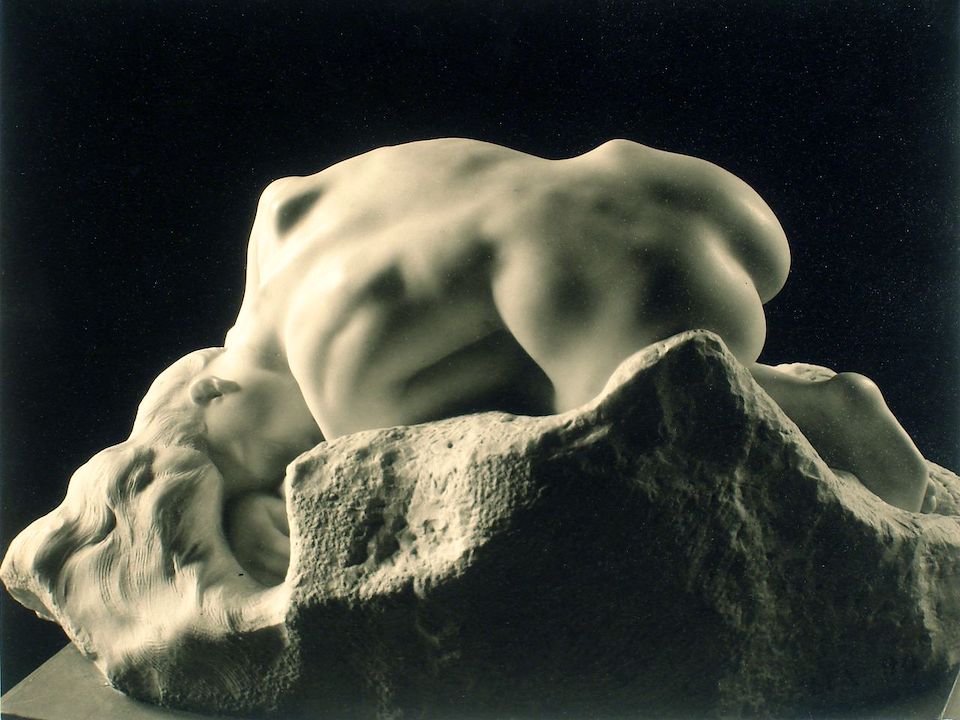
Does it get better? Do some of us, any of us, live happily ever after?
Honestly, I do not know.
Our editor has offered me the opportunity to write here, and be/compose a work in progress. For a year, I have been in too much pain and, seemingly, causing so much pain to others, that I have been unable to write. I have fallen away from family and friends; gone mute.
If I felt I, we, had community, perhaps I would have more courage; perhaps people like me would have more courage.
I know, from reading Dr. Lisa Diamond’s research, that there are many young women who have come out as Nonbinary, or as other “letters” in the LGBTQ+ alphabet early, right out of the gate. Their voices—so sure and steady—give me hope.
But . . . we three are old.
Will we hold fast to the love we bear for one another? Or will the laws that govern this shared culture of ours grind us in their gears?
Let me say here, for the record, I love you, Minta, Beloved Spouse of one year, and I love you, Gentle Man, who has shielded, supported, and loved me unconditionally for decades.
Whatever comes next, I am now willing to face it.
![]()
Texts Consulted/To Consider:
“The ABCs of L.G.B.T.Q.I.A.+,” by Michael Gold, 7 June 2019, “The New York Times.”
“F*ck the identity police, own your fluidity,” by Adrian Sibernagle, 19 February 2020, queerkentucky.com.
“Compulsory Heterosexuality and Lesbian Existence,” Wikipedia.
“A Native American Perspective on the Theory of Gender Continuum,” by DRK, 15 March 2016, healthyplace.com.
“Why it’s never too late to be a lesbian,” by Kira Cochrane, 22 July 2010, “The Guardian.”
“Gender Antagonisms,” by Morgan Potts, 4 April 2016, “The Occupied Times.”
Sexual Fluidity: Understanding Women’s Love and Desire, by Lisa M. Diamond, Harvard University Press, 2008.
Gender Outlaw: On Men, Women, and the Rest of Us, by Kate Bornstein, Vintage Books, 2016.
“Sexual Orientation for the Genderqueer Person,”, from It’s Pronounced Metrosexual, February 2012, by Sam Killermann,
The Illustrations: For more regarding the first four illustrations above, go to “What the Sleeping Hermaphrodite Tells Us About Art, Sex and Good Taste” by Daniel McDermon, 24 June 2016, The New York Times.
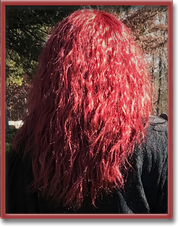
2 Comments
Ross A Konikoff
If you feel what I have felt every time I hold Deborah in my arms, resonating with the universe still, after more than thirty years together, naked in bed or waiting for a train, then you know love. Even if it comes to you late, in your final decade of life, you finally know the only good reason to have been on earth.
Elizabeth Boleman-Herring
Beau writes back, Ross: “Love is the answer, Ross, to any existential question. Why are we here? Love. How do we get through this? Love. What can we do? Love.”